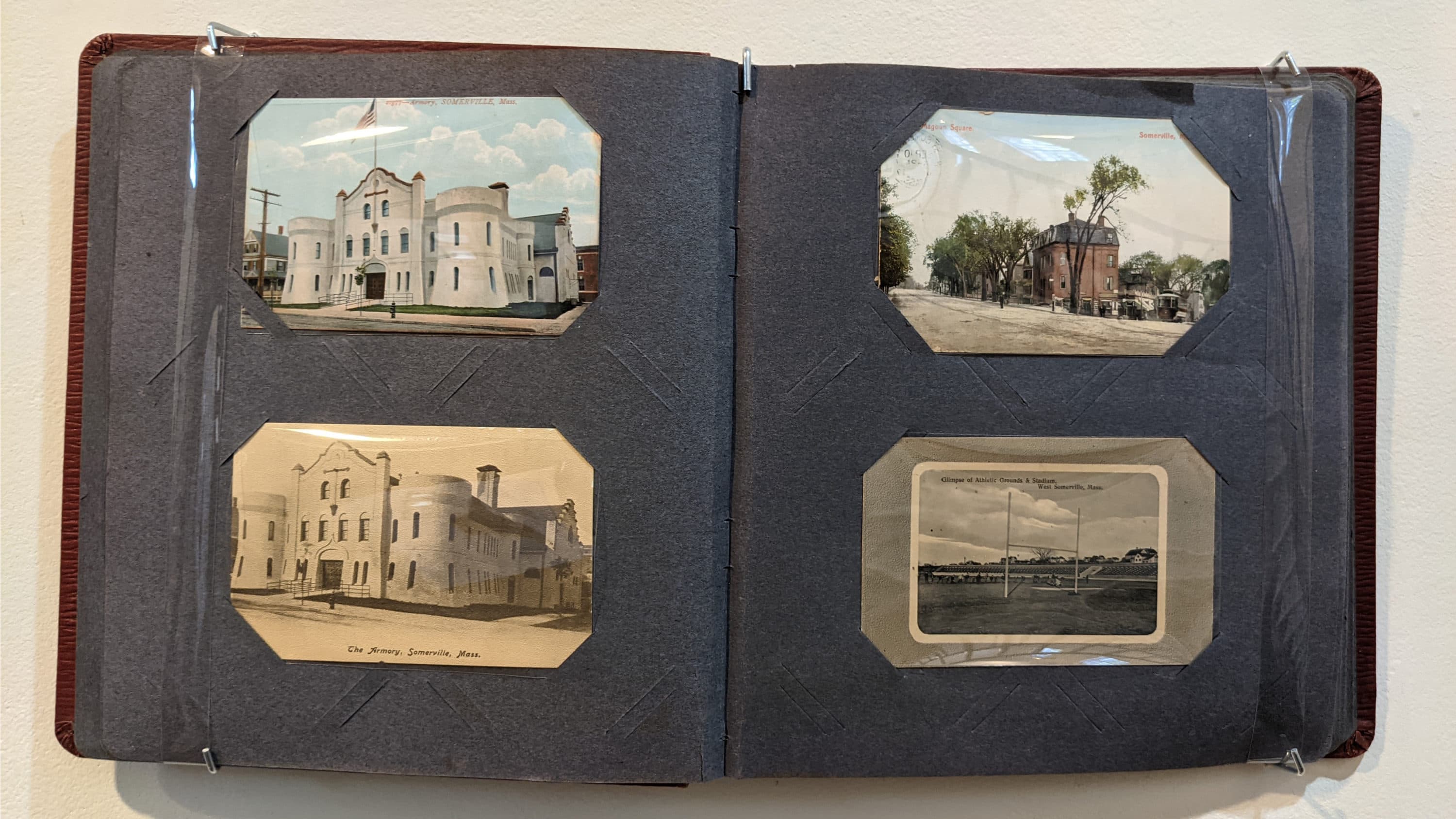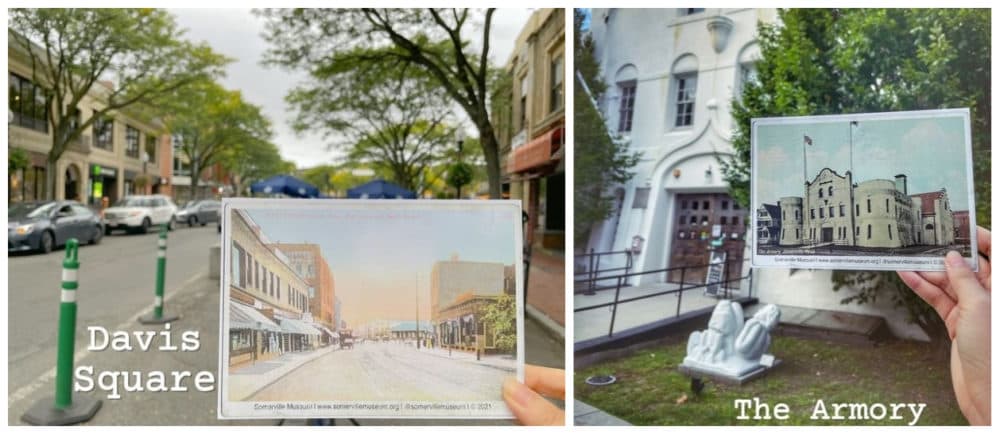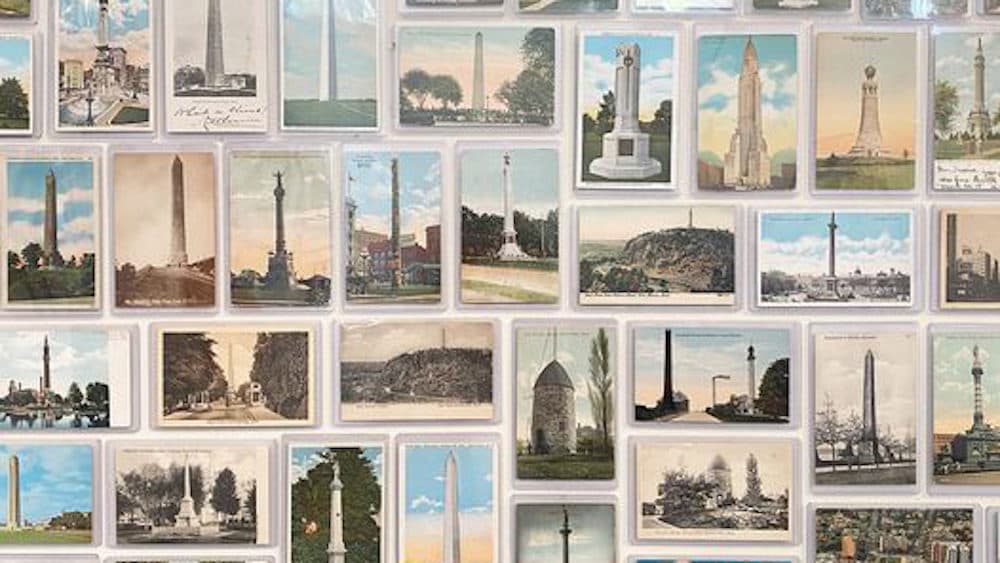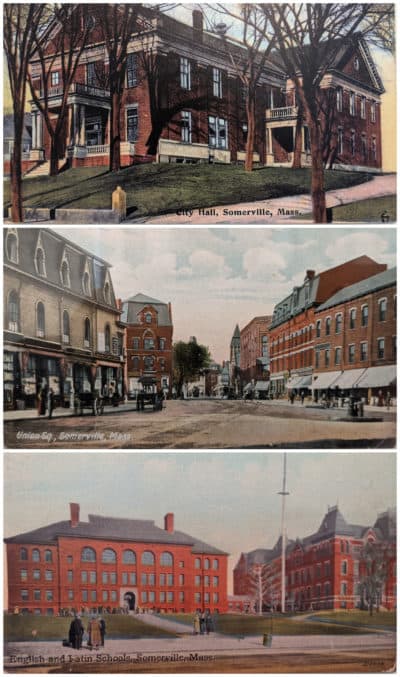Advertisement
Review
Somerville Museum showcases social media from a bygone era: the penny postcard

A hundred years ago, long before Instagram, Snapchat and Twitter popularized the instantaneous sharing of photos and short messages with far-flung social networks, a similar fad in communications technology was sweeping the nation: the penny postcard. The result of new low-cost photographic printing techniques and a loosening regulatory framework around mail and postage, these little cardstock images (and, importantly, their corresponding micro-missives) connected individuals and communities across space, increasing the speed and pace of communication and reshaping the ways we shared and experienced the physical world.
An impressive collection of these "penny postcards" provides the centerpiece for a thoughtful exhibition at the Somerville Museum. In the words of curator David Guss, penny postcards were "the social media of their day;" through them we can see visions from the past, "from the exotic to the local," with special attention to reminding us of the importance of the latter in everyday life: as with early film and photography, early postcards often highlighted everyday life and common places, not just landmarks and celebrities. We wanted to capture here and us, not just there and them.

The show includes a wide range of examples featuring Somerville streets and squares — and elsewhere — from the "golden age of the penny postcard" (roughly 1902 to the start of World War I, when postal rates changed and the German-printed cards became more difficult to import). Whenever possible, the cards are presented alongside other historical memorabilia and artifacts from the museum's collection, to connect the images with other local events and create a broader discussion of the changing ways Americans were thinking about home and travel, and what sort of places or events were worthy of commemoration. (One entire panel is devoted to the controversy — past and present — around civil war monuments and memorials.)

The show also includes some newer works, including modern takes on this 100 year old medium by graphic designer Pier Gustafson. The mocked-up retro cards and associated materials celebrate three notable hometown heroes — Annie Johnson, Marguerite Pearson, and Isobel Cheney — in an attempt to rebalance the historical record, which the curator admits has too often ignored the contributions of women, immigrants, and minorities. (The cards are included in a section on school postcards, which notes that only one of the city's schools from the era was named after a woman.)

Another local artist, photographer Henry Cataldo, was tasked with revisiting locations from key postcards to document changes since images were captured. The contrasts provide a fun game of "spot the differences" using Somerville's streetscapes. Not surprisingly, it's a pretty easy challenge, given the pace of change in this city. One tongue-in-cheek pairing even shows the old high-school in the "before" position, and a photo of it half-demolished for the updated shot: the building was being renovated at the time the show was being assembled. It's an obvious point — places change — but a subtly profound one as well, as we come to appreciate just how much development and redevelopment can happen in a city that was ostensibly "built-out" by World War II.
Other newer works include a ceramic cookie jar in the shape of Somerville's 1854 Enoch Robinson Round House (the jar, like the house, is a bit strange, but fascinating) and the centerpiece-de-resistance for the show: a large model of the city's famous Powderhouse, recreated by Kyle Huffman in paper and wicker, somewhere between a statue and a giant piñata. Behind the structure, an entire wall of postcards situates the local landmark within a rogue's gallery of obelisks and monoliths from around the world.
These additions and updates — as well as the panels connecting postcards to local history, such as President Taft's July 4th visit to the city in 1910 — are interesting, but it's possible that the small show tries to do too much, and is consequently stretched a little thin for visitors eager to learn more about the postcard phenomenon. The museum format itself — framed images on walls — seems to betray the magic of postcards: while it's refreshing to see them elevated to "museum-worthy status," they may be better suited for sparking a more personal, intimate experience. A postcard is something you need to lean in to see, something you hang on the fridge as a quiet little reminder, or stow away in your secret personal archive or album. The power of the postcard can be best-appreciated at these extremes of immediacy and scale: either a single fleeting moment captured and dashed off in the mail, or the massive — and ideally, to this reviewer, disorganized, random, and overwhelming — nature of the shoebox collections found it attics or (sadly, pre-eBay) antique garage sales.
Given the obvious and expressed connection between postcards and social media, it's strange that the show seems to ignore the thousands of more recent images captured on cell phones and Instagram feeds. Even a single screen or small collage added to the last panel (or the online materials) would provide an opportunity to widen this conversation and explore how these newer images might also help us ponder and process our changing relationships to place, to events, and to each other in the age of gentrification, new demographic trends, and tectonic shifts in both culture and communications.
"Penny Chronicles and the Stories They Tell" runs through Jan. 8 at the Somerville Museum with advance-purchase timed-tickets. In connection with the exhibition, the museum is coordinating related events, including a postcard trade show on Dec. 18 and a special Veteran's Day event at the Milk Row Cemetery when a new postcard will be released.